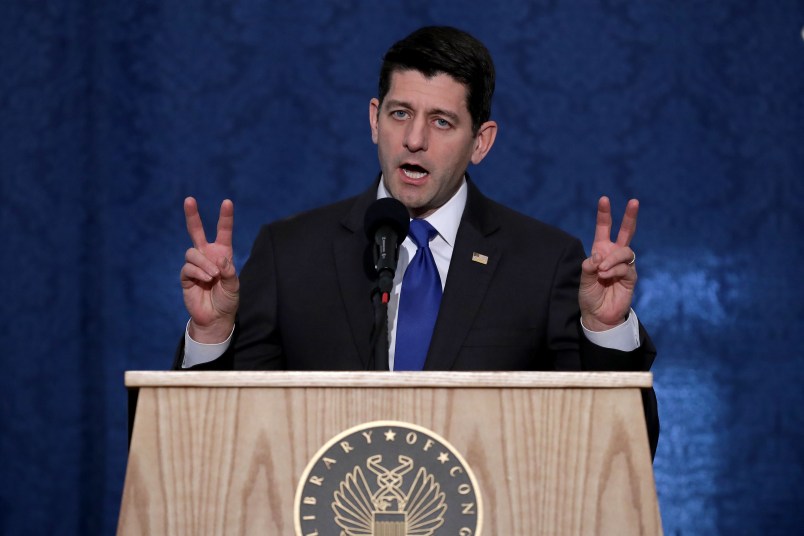Shortly after Donald Trump won the 2016 election, then-House Speaker Paul Ryan (R-WI) studied up on how to interact with people with narcissistic personality disorder.
According to Insider, which obtained an early copy of Washington Post reporters Bon Woodward and Robert Costa’s new book “Peril,” Ryan was surprised by Trump’s win in the 2016 election against Democratic nominee Hillary Clinton.
Ryan suddenly realized that he would be required to work with the then-incoming President due to Republicans’ control of the House and Senate at the time — which prompted Ryan to start researching how to deal with someone who is “amoral and transactional,” the book says.
A wealthy doctor in New York, who was also a Republican donor, reportedly reached out to Ryan later and told him that he “need(s) to understand what narcissistic personality disorder is.”
“What?” Ryan reportedly asked. The doctor then sent the then-House speaker an email detailing his “thoughts on how to best deal with a person with anti-social personality disorder,” which included links to articles in The New England Journal of Medicine, and information from the International Statistical Classification of Diseases and Related Health Problems, 10th edition.
Ryan reportedly studied the articles “for weeks, convinced Trump had the personality disorder.”
The book also reported on the tensions between Trump and Ryan after the then-President’s “very fine people on both sides” remark in defense of the white supremacists behind the deadly “Unite the Right” rally in Charlottesville, Virginia in 2017.
After Ryan tweeted his condemnation of Trump’s “both sides” remark, Trump reportedly got into a shouting match with Ryan in a phone call, telling the Wisconsin Republican: “You’re not in the foxhole with me!”
“Are you finished?” Ryan reportedly yelled back. “May I have some time to speak now? You’re the President of the United States. You have a moral leadership obligation to get this right and not declare there is a moral equivalency here.”
Trump reportedly stood by his defense of the white supremacists and those who gathered to protest the removal of the Robert E. Lee statue in Charlottesville.
“These people love me. These are my people. I can’t backstab the people who support me,” Trump said, according to the book.
Even after Ryan pointed out that there were white supremacists and neo-Nazis at the Charlottesville rally, Trump acknowledged that “there’s some bad people” and that he is “not for that,” before insisting that “there’s some of those people who are for me.”
“Some of them are good people,” Trump reportedly said.







His primary research tool…
Paul Ryan sounds very brave in this account of how brave he told Bob Woodward he was.
In reality, his research should have never ended; only accelerated as Hair Furor spiraled into insanity.
First comment w/o reading the article and only going by the headline and photo is that Ryan would like us all to think that TFFG doesn’t have NPD, but is normal.
Hey Paul if he was so normal why did you step away?
Researched…and then proceeded to keep his opinion to himself, do nothing, and support his party over his country.
Just like every Republican.